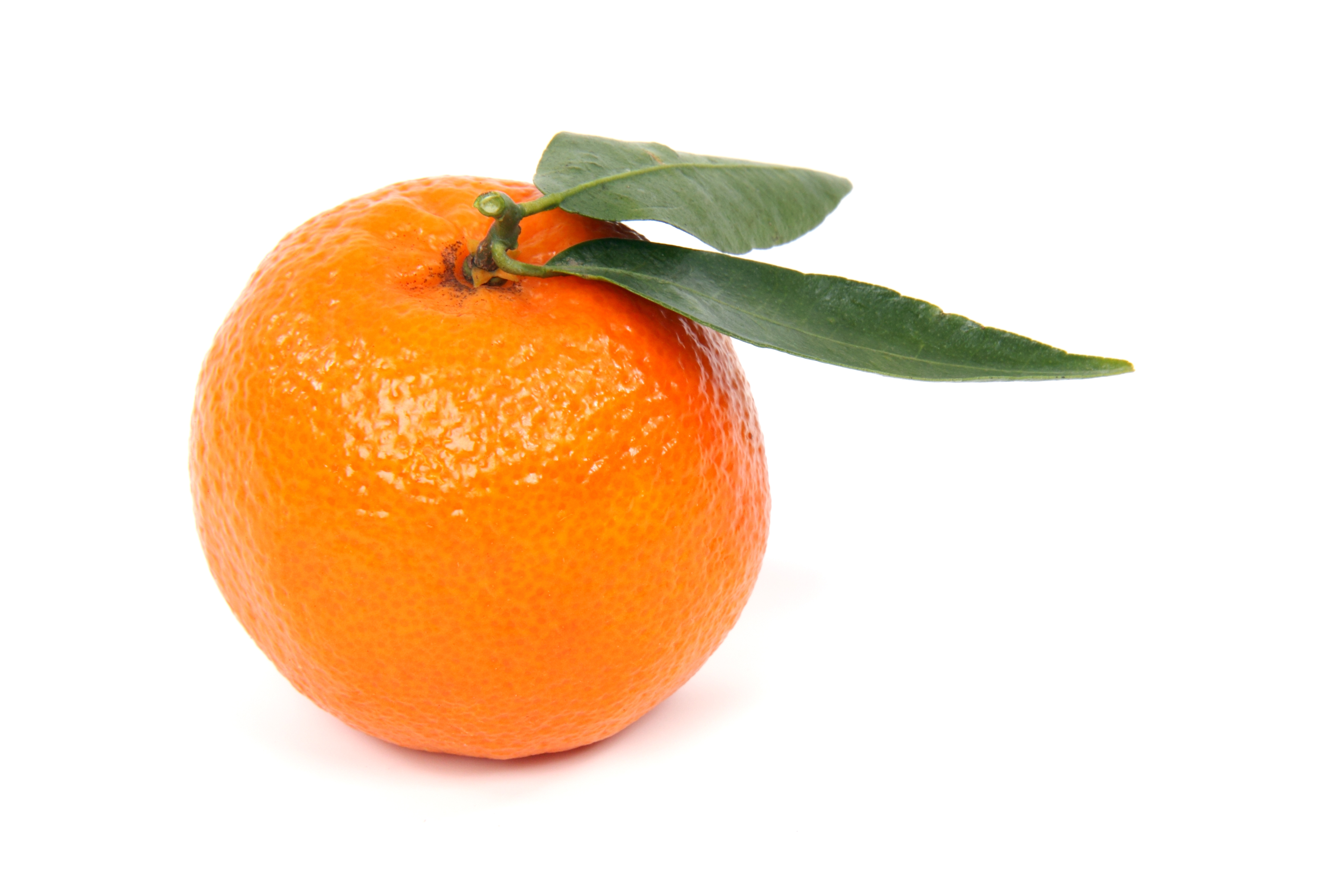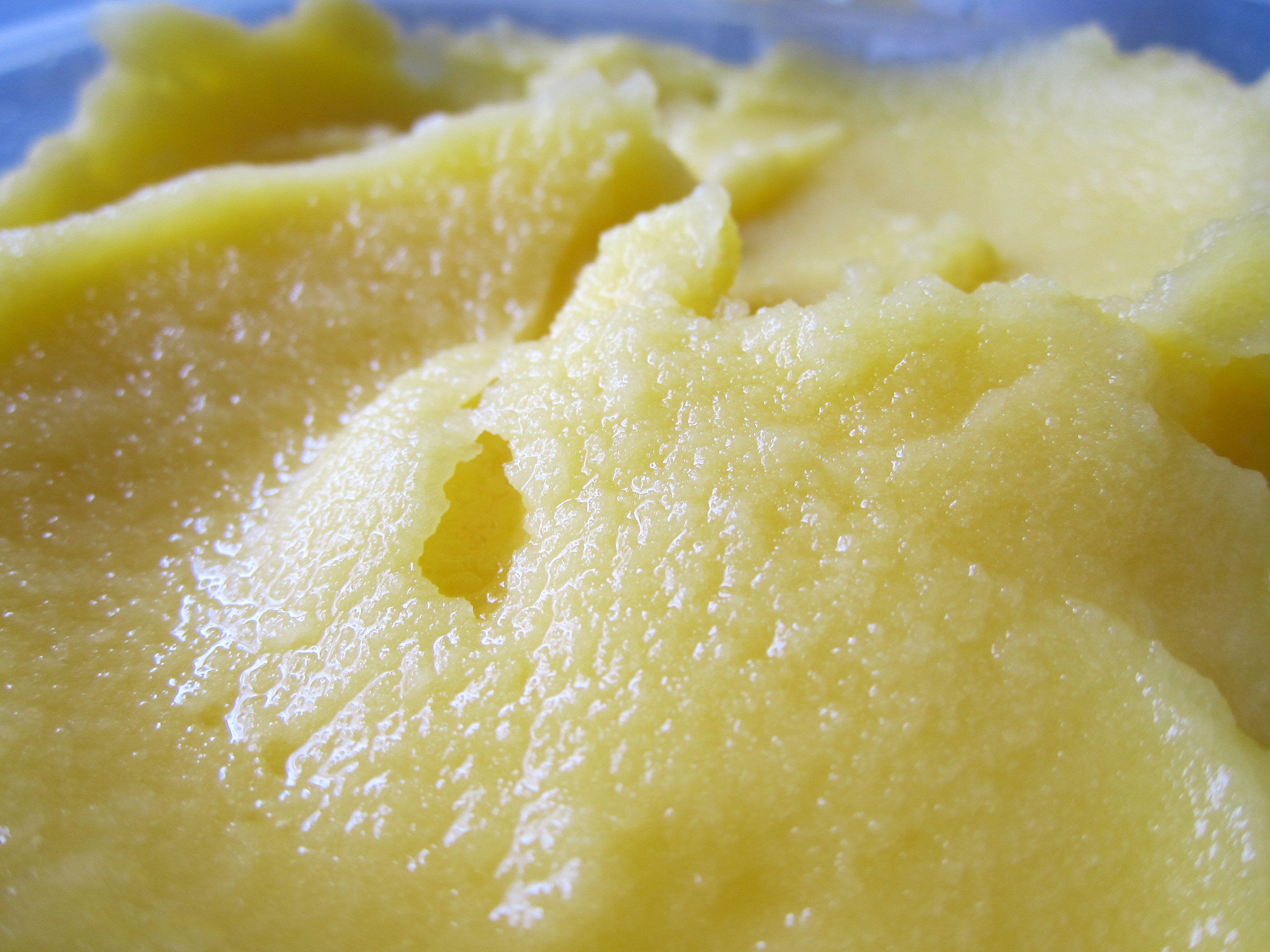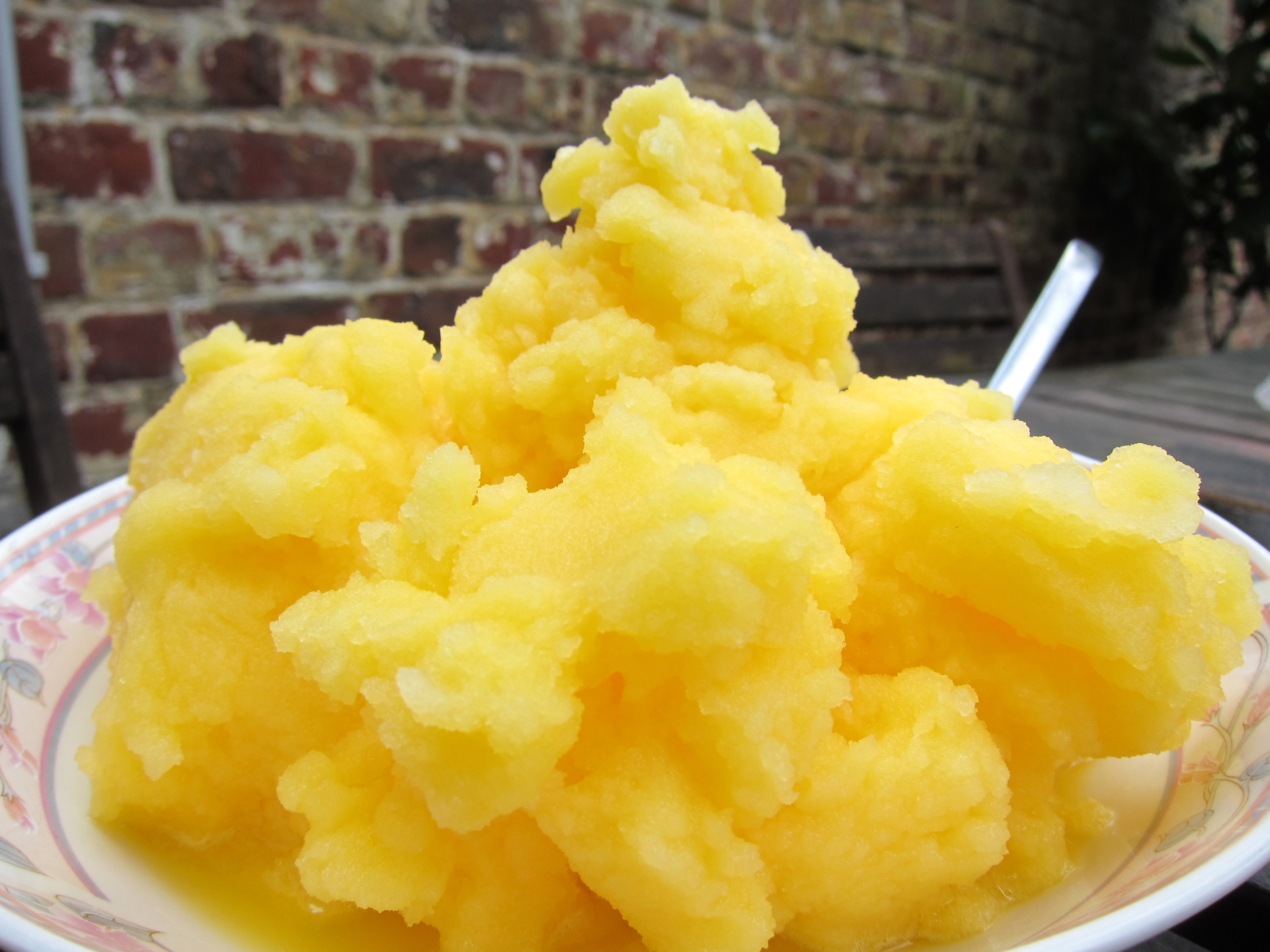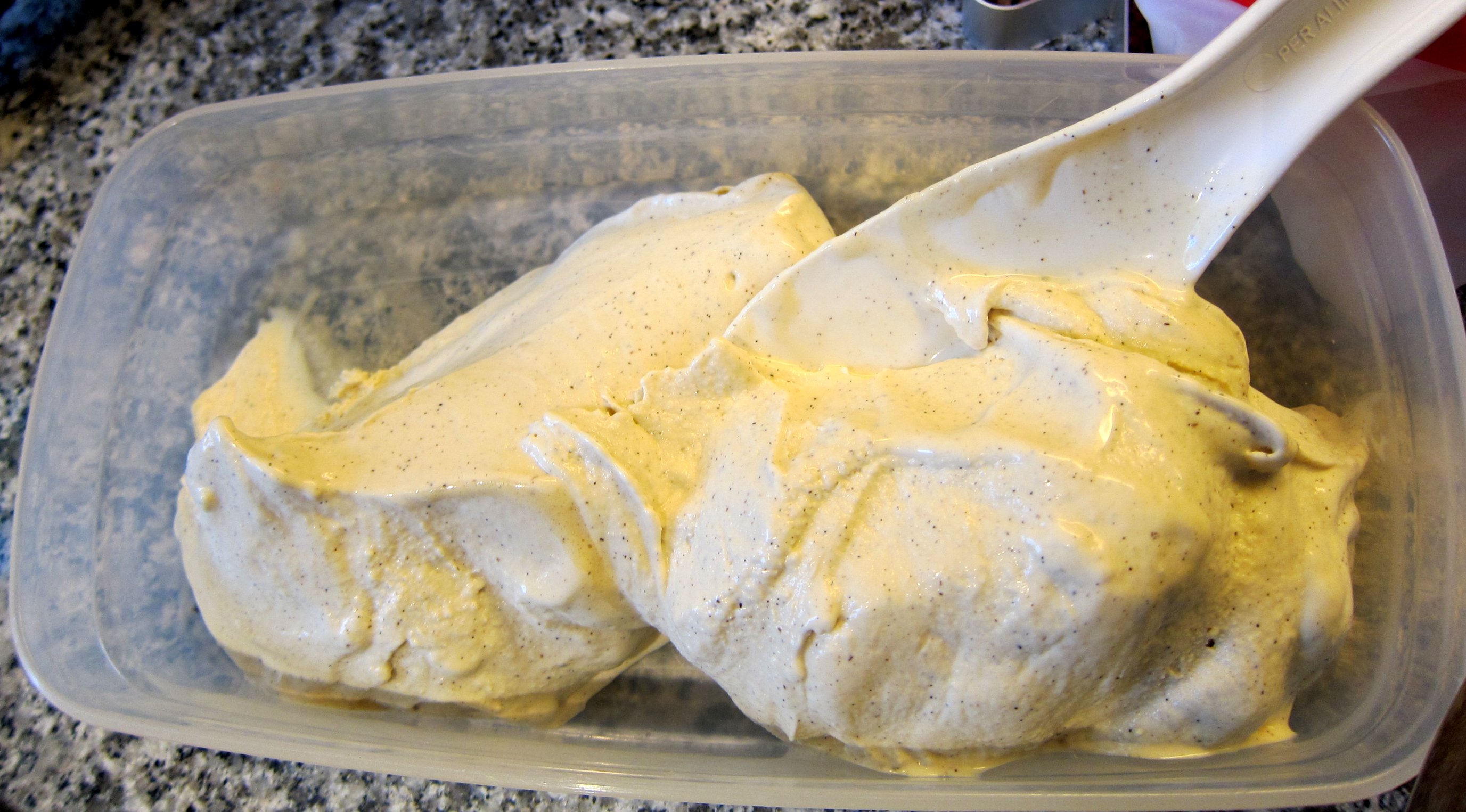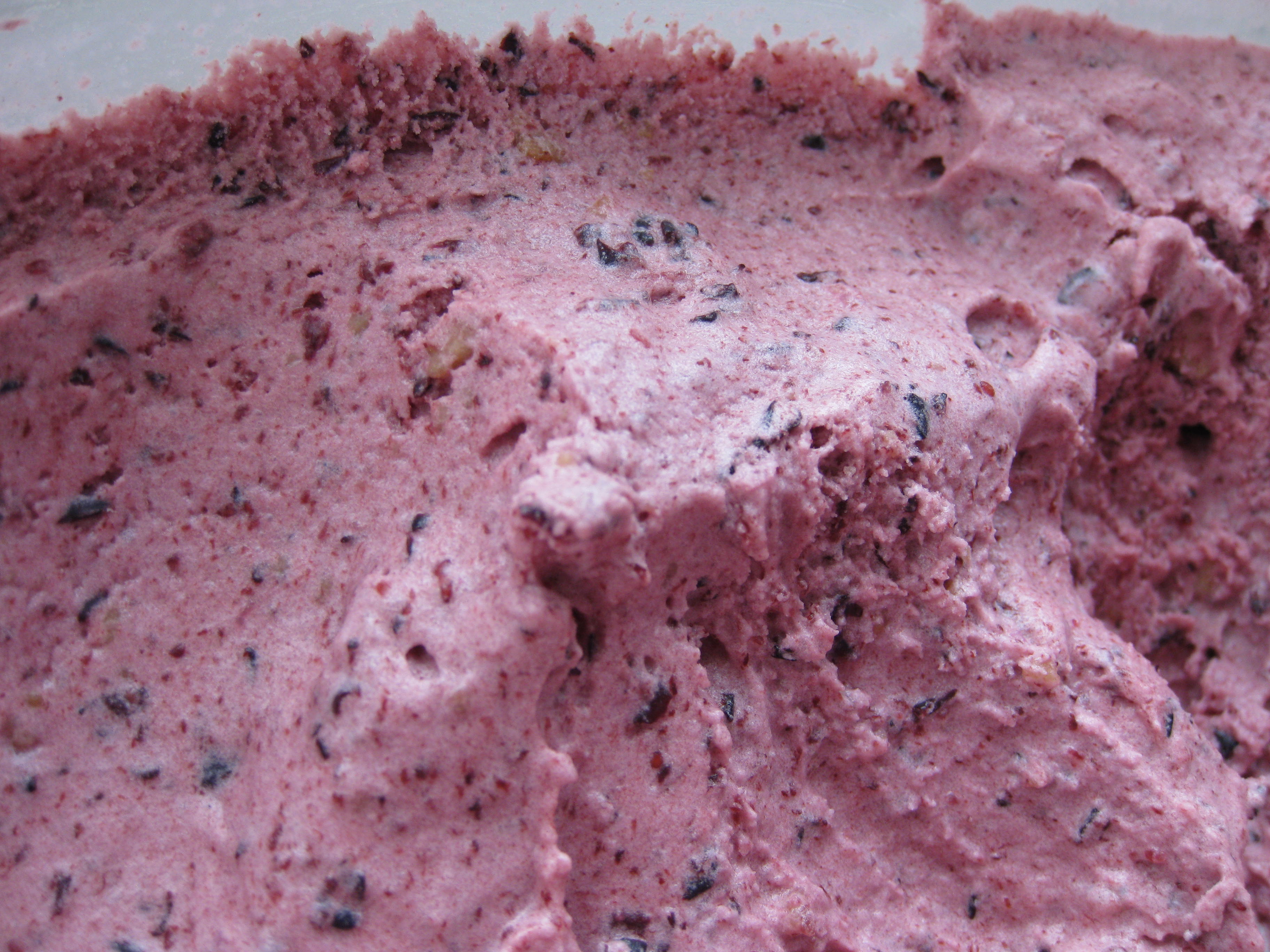Clementine sorbet
Refreshing and sweet Clementine sorbet – who can resist that? The Clementine is a popular “easy cousin” [easy to peel, generally seedless] to the orange, and true to style, this recipe could hardly have been easier either. In fact – if you can mix juice, water and sugar, you are practically there!
- Brother Marie-Clément Rodier (1839–1904). The Clementine was named after this French missionary, in charge of the fruit gardens of an Algerian orphanage in Misserghin, in the Oran province. There, many believe he created the first Clementines through cross-breeding.
The Clementine is a mandarin orange (i e from the same family as tangerines and satsumas). Typically, they are juicy, sweet (having less acidity than oranges), seedless and easy to peel. Mandarin oranges are particularly popular around Christmas time in some countries, and during the Chinese New Year, they are supposed to symbolise abundance and good fortune. Sounds like a really fortunate base for a sorbet, does it not?
A super simple recipe: take fruit juice, add sugar (and possibly some water)
Yes, that is correct. While I encourage everyone who so desires to go out and squeeze their own Clementine juice straight from the fruits, I needed a quick fix for fastest possible results: ready-made fruit juice!
Using ready-made fruit juice turns the process into child’s play, really: if you manage to add (an appropriate amount of) sugar and some water to the Clementine juice, you are basically there!
Still, the general wisdom of frozen dessert-production applies: the sorbet only becomes as good as its ingredients. In other words, only use the best available, pure fruit juice you can get hold of! Any additives put into the juice is likely to affect the taste, and could degrade the final result.
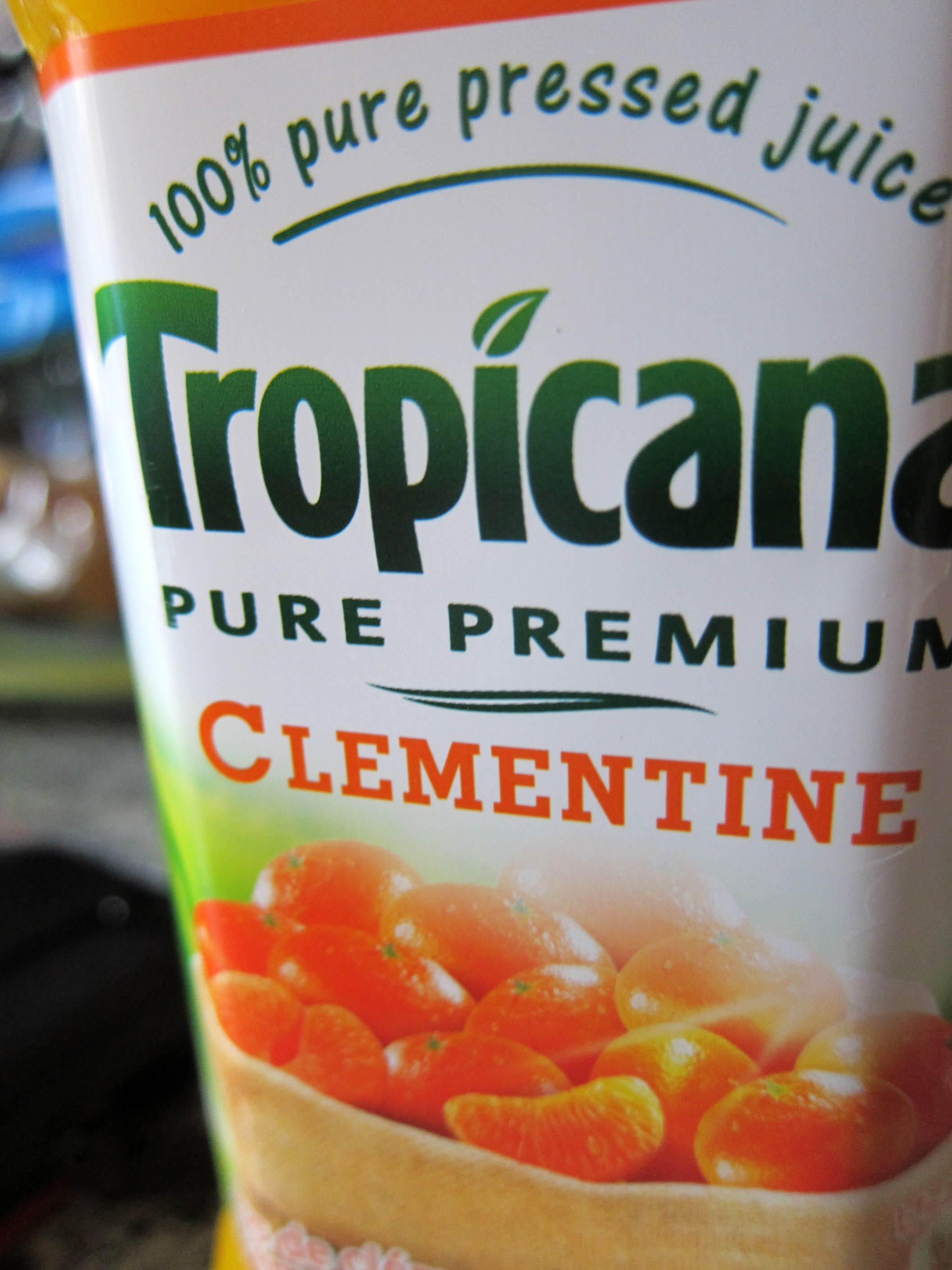
While much can be said about using ready-made fruit juice, one thing is clear: it makes sorbet preparations almost effortless
Making simple sugar syrup
While you could make a sorbet by simply adding a sufficient amount of sugar straight to the fruit juice, I decided to take the somewhat more economical step of mixing the fruit juice with sugar syrup (this is, however, not only a matter of economics – I actually prefer the overall flavour somewhat ‘diluted’ and less sweet: using only pure juice and sugar often tend to make the sorbets a bit too sweet for my taste. But then again, I have friends who like the opposite, so follow your own preferences on this).
Simple sugar syrup is, as you may know, simply a mix of water and sugar. The proportions of these two may vary depending on the flavour of the sorbet, but equal parts sugar and water is a tested and well-known general formula.
Going by the classic recipes, the fusion of water and sugar should be brought about by heating the mixture to a simmering boil. If you plan on making a quantity of sugar syrup and save for later in the fridge, I would strongly suggest that you follow this method, as it would increase the shelf-life of your simple syrup (later, when the transparent liquid begins to turn cloudy, or otherwise mouldy, you know it is time to throw it away).
But for quick use, you may as well simply stir or shake (cold) water with sugar until the latter has dissolved completely – then, you do not have to worry about any cooling-down period before using the sugar syrup.
Adding the correct amount of sugar, using fancy instruments … or a raw egg
Regardless of whether you use sugar syrup or sugar straight into the fruit juice, you would need to add only as much as the sorbet requires. This is not only a matter of flavour and sweetness – the sugar actually helps to build up the consistency of the sorbet. Too little sugar will make the final sorbet unpleasantly icy and hard-frozen. Too much sugar, on the other hand, will not only make the sorbet sickeningly sweet but also cause it to remain too soft even after hours in the freezer. Clearly, what we are looking for is the golden balance!
To some extent, the final sugar amount is a matter of personal taste: some like it sweeter, others don’t. Still, a common rule of thumbs for sweet sorbets would be to aim for a sugary sweetness level of about 31º Brix /17º Baumé.
That is all very well if you have some instruments for measuring (like a sugar scale/saccarometer or a refractometer). But in case you have none, you could still rely on the trusty ol’ Egg test!
Carefully wash a fresh, raw egg. Drop it in the sugar syrup. Check how the egg behaves – if the egg becomes too submersed, add more sugar. If the egg pops up too much above the water, add more water (or more juice, in case you so prefer).
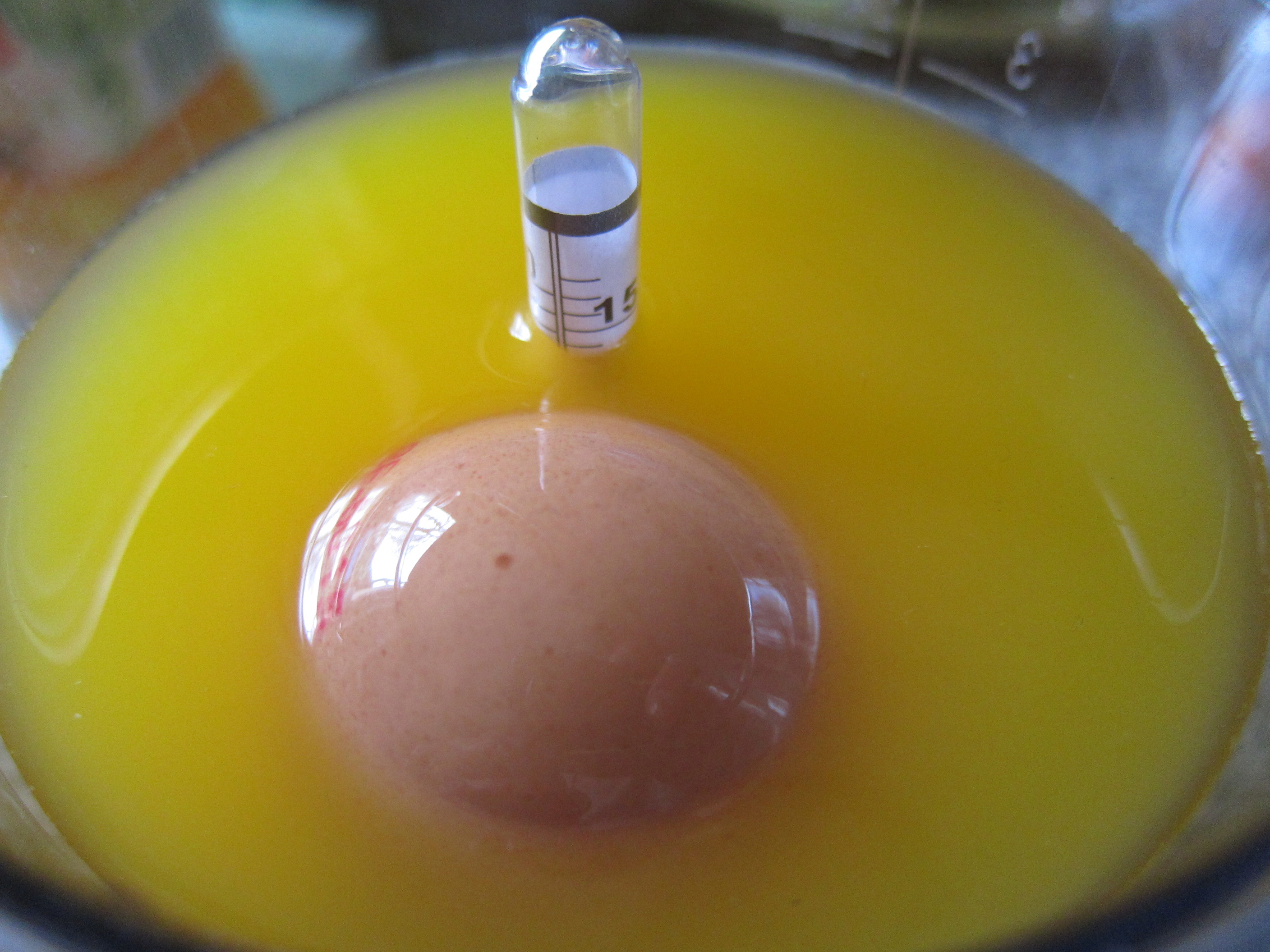
Two ways of determining the appropriate sugar-level for a sorbet base. On top, my saccarometer, a hydrometer measuring the amount of sugar in a liquid. For sweet sorbets, the so-called Baumé degree should be about 17 or 18. Next to it, a washed, raw egg floating along, its elevated position indicating that the sugar level is about right (although verging on the sweet side).
Once you have gotten the sugar balance right, and provided that your mixture is cool enough (and preferably even chilled), churn it in your ice cream machine according to instructions.
If you have no ice cream machine, simply still-freeze the sorbet base in your freezer (see this post for easy instructions on how to best do that).
After the churning, your Clementine sorbet should hopefully look as tempting as in the picture below.
Enjoying freshly churned sorbet can be an exquisite pleasure, and some even consider that to be enough reason for investing in an ice cream machine. But if you prefer a firmer, more frozen sorbet, just put it in the freezer for at least a couple of hours before serving it (prepared with the proper sugar-balance, the sorbet should stay reasonably scoop-able even after spending time in the freezer)
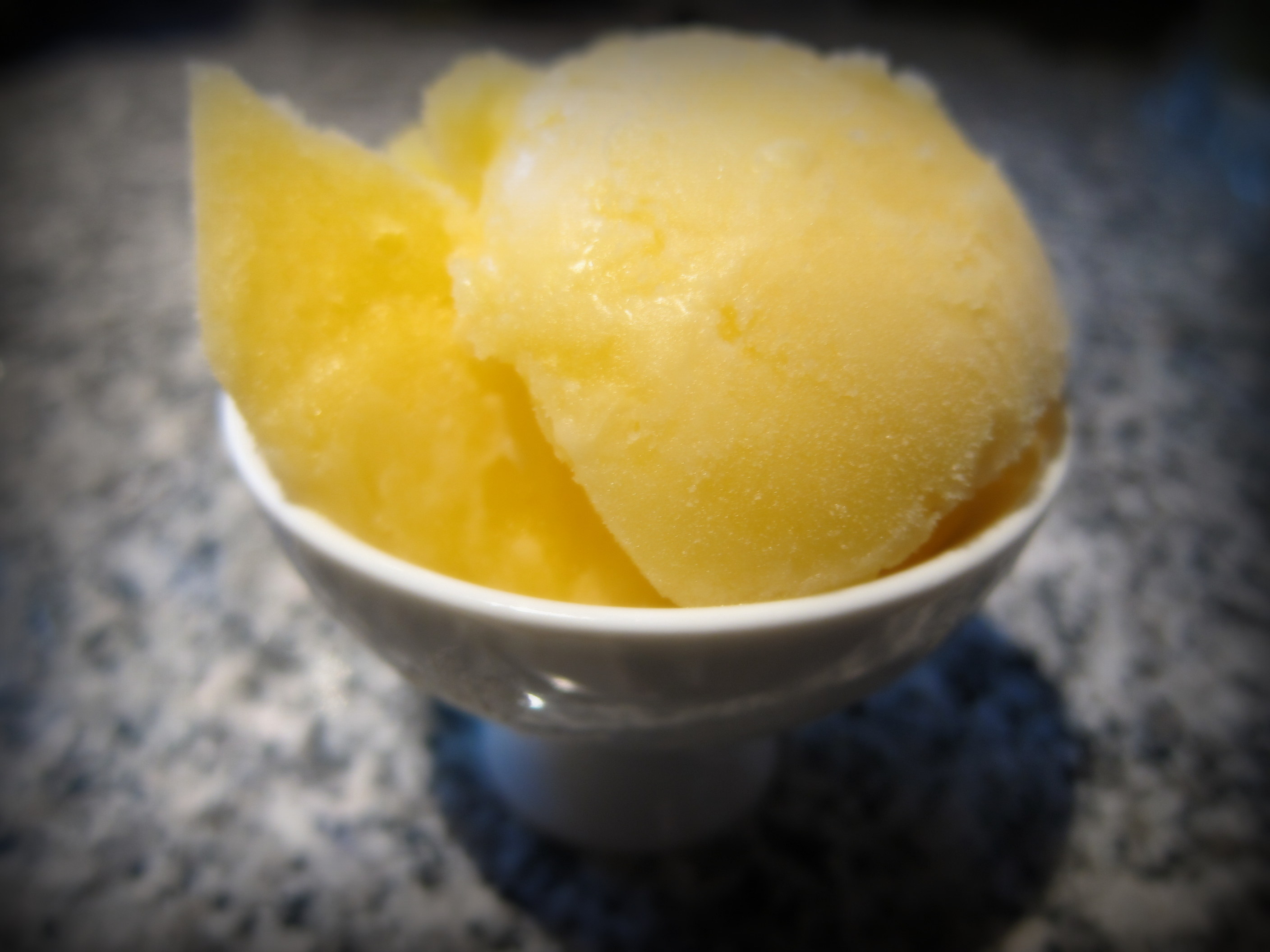
Clementine sorbet, now in the more traditional frozen state (after having spent some time in the freezer)
Sometimes, less is more. This certainly often seems to be the case with sorbets.
This charming Clementine sorbet – consisting of nothing more than pure fruit juice, water and sugar – could not have been easier to make. But there is clearly beauty in simplicity!
Even myself was pleasantly surprised by the smooth and tasty end-result: with quality juice and the proper sugar-balance, the Clementine turns out to be a truly delightful sorbet flavour. Happily, I quickly noted that both discerning friends and family shared my view. While heaping praise over the sorbet, they just kept coming back for more!
Since orange juices sometimes are referred to as ‘liquid sunshine’ the conclusion is simple: Let the frozen sunshine in! ![]()
- 300 ml (about 1.3 cups) pure clementine juice of good quality
- About 300 ml simple sugar syrup (about 1.3 cups; made up of a mixture of 50% water and 50 % sugar)
- Juice of 1 lemon
- Prepare the simple sugar syrup (dissolve the sugar completely, either by cooking/warming the water+sugar and letting it cool down, or by shaking/whisking the blend thoroughly).
- Mix equal parts of the clementine juice and the sugar syrup.
- Check the sugar-balance (either with specialised tool or by using the handy Egg-test), possibly adjusting it by adding more juice (if too sweet) or more sugar syrup (if more sweetness is required).
- Add the juice of about 1 lemon to offset a too sweet overall flavour-sensation.
